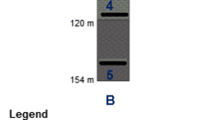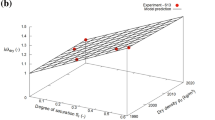Abstract
To design an efficient and cost effective borehole heat exchanger (BHE), it is necessary to know the thermo-physical parameters of the subsurface at the project location. The quality management and the examination of existing BHEs are becoming particularly important with the increasing application of ground coupled heat pumps. The analysis of data collected from a BHE-logger (temperature-depth-measuring system) in a water-filled BHE allowed several geothermal parameters to be determined. A comparison of measurements obtained from the BHE-logs, geothermal response tests and laboratory soil tests indicated a good correlation. In addition to detecting hydraulic short circuits due to defects in the pipe system or backfill material, being relatively quick and easy to use, the BHE-logger can be a valuable tool in the long-term monitoring system and quality control of BHEs.
Résumé
Pour concevoir un dispositif efficace et rentable d’échange de chaleur en forage, il est nécessaire de connaître les paramètres physiques et thermiques du sous-sol à l’emplacement d’un projet. La gestion de la qualité des sondes géothermiques verticales devient particulièrement importante avec le développement croissant des pompes à chaleur couplées à des dispositifs d’échange de chaleur dans les sols. Plusieurs paramètres géothermiques peuvent être obtenus à partir d’enregistrements en forage remplis d’eau avec des BHE-logger donnant une mesure de la température en fonction de la profondeur. Des comparaisons entre des mesures obtenues à partir d’enregistrements en forage, de tests de réponse géothermique et de tests sur échantillons au laboratoire ont montré de bonnes corrélations. En plus de la possibilité de détecter des courts-circuits hydrauliques dus à des défauts dans le système de tuyauterie ou le matériau de remplissage, le BHE-logger, relativement rapide et facile à utiliser, peut être un outil précieux dans un système de surveillance à long terme et de contrôle de qualité des dispositifs d’échange de chaleur en forage.





Similar content being viewed by others
References
DIN EN 1997-2 (2007) Eurocode 7—geotechnical design—part 2: ground investigation and testing
Hamm K, Theusner M (2008) Unpublished consulting report no. 0126/08, Erzhausen, pp 12
HLUG (Hessian Authority for the Environment and Geology) (2005) Umweltatlas Hessen 2004. (Eds) HLUG, Wiesbaden, pp 250
Hoselmann C (2007) Untermain-Mittelterrassen-formation. In: LithoLex (online-database). Hannover: BGR. Last updated 25 Nov 2008. Cited 2 May 2007. (Record no. 1000006). Available from: http://www.bgr.bund.de/DE/Themen/GG__Palaeontol/LithoLex
Lang S (2007) Die geologische Entwicklung der Hanau-Seligenstädter Senke (Hessen, Bayern). Electronic publications Darmstadt (EPDA), 782, Dissertation TU Darmstadt, pp 97 (online-publication—http://elib.tu-darmstadt.de/diss/000782/)
Popov YA et al (1999) Characterization of rock thermal conductivity by high-resolution optical scanning. Geothermics 28:253–276
Rohner E, Rybach L, Schärli U (2005) A new, small, wireless instrument to determine ground thermal conductivity in situ for BEH design. In: Proceedings of the world geothermal congress 2005, Antalya, Turkey
Semmel A (1969) Erläuterungen zur Geologischen Karte von Hessen 1:25.000 Blatt Nr. 5916 Hochheim a. Main, Hessisches Landesamt für Bodenkunde, Wiesbaden, pp 51–99
Sissingh W (2003) Tertiary paleogeographic and tectonostratigraphic evolution of the Rhenish Triple Junction. Paleogeogr Paleoclimat Paleoecol 196(1–2):229–263
Acknowledgments
The research borehole Jügesheim and the completion of the BHE was initiated and funded by the Hessian Authority for Environment and Geology (HLUG). The project partners at the Technical University of Darmstadt, the Hessian Agency for the Environment and Geology and at the consulting firm Hamm & Theusner GbR are thanked for the funding and provision of equipment and data. Special thanks go to Dr. Christian Hoselmann at the HLUG who documented the drill cores from the research drilling Jügesheim and contributed to this work.
Author information
Authors and Affiliations
Corresponding author
Rights and permissions
About this article
Cite this article
Homuth, S., Hamm, K. & Sass, I. BHE logging and cement hydration heat analyses for the determination of thermo-physical parameters. Bull Eng Geol Environ 72, 93–100 (2013). https://doi.org/10.1007/s10064-012-0455-2
Received:
Accepted:
Published:
Issue Date:
DOI: https://doi.org/10.1007/s10064-012-0455-2
Keywords
- Research drilling completion of BHEs
- Thermal conductivity
- Subsurface temperature logging
- Hydratation heat
- Quality management




